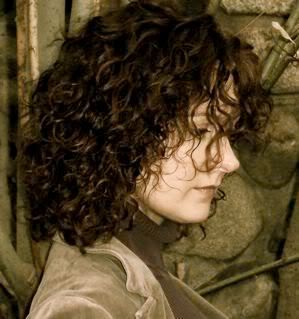Happy birthday, Henry
 Here's the lovely and talented Jonathan Rhys-Meyers as Henry VIII in that strangely lifeless TV series (and I thought he did a much better job as Elvis).
Here's the lovely and talented Jonathan Rhys-Meyers as Henry VIII in that strangely lifeless TV series (and I thought he did a much better job as Elvis).
Yes, it's Henry VIII's birthday today (born June 28, 1491) and we all know what he's famous for: six wives, some of whom came to sticky ends, in his desperate attempt to get a male heir. The Tudor dynasty was very shaky at the time and there were various ambitious powerful families around who had claims as good (or as poor) as the Tudors' to the throne. Henry was allegedly extremely handsome and athletic as a young man, so this casting does make some sense although the most common image of him is the Holbein portrait where he's immense and powerful and not at all pretty. And the codpiece. Eeew. I mean, really does anyone find codpieces sexy? Come on, you can confess. We're not judgmental here (well, actually I am but the others aren't). I can't even remember Jonathan RM's codpiece but that's just a sad reflection on my manviewing radar.
Henry was allegedly extremely handsome and athletic as a young man, so this casting does make some sense although the most common image of him is the Holbein portrait where he's immense and powerful and not at all pretty. And the codpiece. Eeew. I mean, really does anyone find codpieces sexy? Come on, you can confess. We're not judgmental here (well, actually I am but the others aren't). I can't even remember Jonathan RM's codpiece but that's just a sad reflection on my manviewing radar.
To continue. When Pam and I present Writing the Hot Historical (aka Pam and Janet Evening) at Dallas, I take it upon myself to discuss history--what you want to use and what you don't want to touch with a bargepole. Like codpieces. In the right hands they could be sexy. (Pause while I roll on the floor at my own single entendres.) Similarly, the whole atmosphere of the Tudor court--the king's private life made very public because the future of the country depended upon a strong succession, the ritualistic aspect of sex--you could do things with this in an erotic romance. The issue of privacy is interesting too--the word bedchamber did not come into being until later in the sixteenth-century--and most houses were not designed with corridors. Rooms opened onto rooms that opened onto more rooms. Privacy, as we know it, was not an issue.
And back to the codpiece--oh, if you insist, (sigh) here's a more, ah, detailed picture--how about that for a blatant sexual announcement: it's here, it's ready to go, even when you're wearing full armor. You'd think that might get in the way while you're jousting or whatever, if it didn't frighten the horses first. But it wasn't until the Regency that fashions allowed men to so blatantly display their attributes again.
What historical periods do you find sexy other than the Regency?
News from the squeaky-clean side (sort of): go to Pam Rosenthal's site, www.pamrosenthal.com and enter her contest to win a copy of The Rules of Gentility.
















































